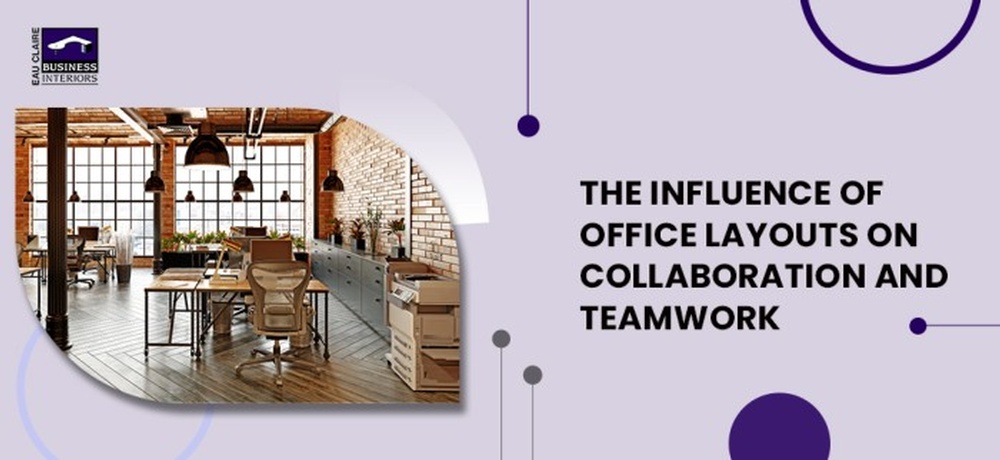The Influence of Office Layouts on Collaboration and Teamwork

Office layouts play a pivotal role in shaping the way employees interact and collaborate with one another. The design and arrangement of office spaces can either foster or hinder communication, teamwork, and innovation. As businesses recognize the significance of collaboration for driving success and creativity, they are reimagining office layouts to create environments that promote interaction and synergy among team members. In this blog post, we will explore the influence of office layouts on collaboration and teamwork, and how a well-designed workspace can enhance productivity and foster a strong sense of camaraderie.
1.) Open-Plan Layouts for Increased Interaction:
Open-plan office layouts have gained popularity in recent years due to their potential to encourage collaboration. By removing physical barriers and cubicles, open-plan spaces facilitate easy communication and impromptu discussions among colleagues. Team members can share ideas, seek input, and collaborate more freely, promoting a culture of transparency and accessibility. However, it is essential to strike a balance by providing quiet spaces for focused work and individual privacy to avoid noise distractions.
2.) Collaborative Zones and Huddle Spaces:
In addition to open-plan layouts, collaborative zones and huddle spaces offer designated areas for team discussions and brainstorming sessions. These spaces can be equipped with comfortable seating, whiteboards, and digital displays to encourage active participation and idea sharing. Collaborative zones allow teams to come together without interrupting the entire office, fostering a conducive environment for creativity and innovation.
3.) Team-Oriented Workstations:
Designing workstations that facilitate teamwork is crucial for enhancing collaboration. Consider arranging workstations in clusters, with team members facing each other, rather than isolating individuals. This layout promotes camaraderie, encourages open communication, and fosters a stronger sense of unity among team members. Additionally, providing shared storage and resources in close proximity can improve efficiency and encourage collaborative problem-solving.
4.) Breakout Rooms and Meeting Spaces:
Breakout rooms and meeting spaces are essential elements of office layouts that influence collaboration. These spaces offer teams privacy and flexibility for more focused discussions, brainstorming, or formal meetings. Equipped with the necessary technology and tools, breakout rooms facilitate effective teamwork and decision-making processes.
5.) Technology Integration for Remote Collaboration:
As remote work becomes more prevalent, technology integration is vital for seamless collaboration between in-office and remote team members. Implement video conferencing tools, digital collaboration platforms, and cloud-based file sharing systems to bridge the gap between physical and virtual interactions. An office layout that accommodates remote collaboration strengthens team bonds and ensures that all members are equally engaged and informed.
6.) Employee-Centric Design for Well-being:
A collaborative office layout should prioritize employee well-being to ensure that employees are motivated and energized to work together. Consider incorporating biophilic design elements, such as plants and natural light, to create a calming and rejuvenating environment. Ergonomic furniture and comfortable breakout areas contribute to employee satisfaction and productivity.
7.) Flexibility for Adaptability:
A well-designed office layout should be flexible and adaptable to accommodate changing team dynamics and work requirements. As teams grow, shrink, or reorganize, the office space should be easily reconfigurable to meet the evolving needs of the organization. Modular furniture and flexible partitions can help create spaces that adjust to changing collaboration needs.
The influence of office layouts on collaboration and teamwork cannot be underestimated. A thoughtfully designed workspace can foster communication, creativity, and camaraderie among employees, leading to increased productivity and innovation. Open-plan layouts, collaborative zones, team-oriented workstations, breakout rooms, and technology integration are essential components of a collaborative office. By prioritizing employee well-being and designing with flexibility in mind, businesses can create an environment where collaboration thrives and teams can reach their full potential. A collaborative office layout empowers employees to work together seamlessly, fostering a positive and dynamic work culture that contributes to the overall success of the organization.